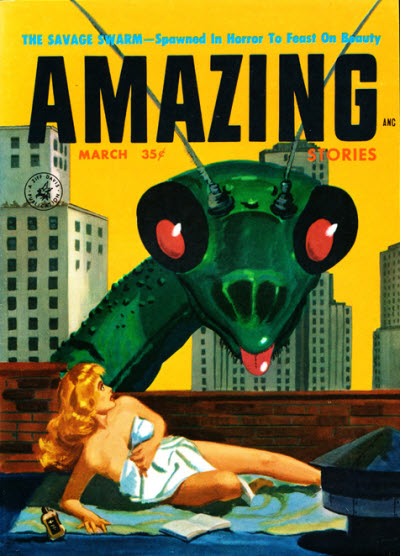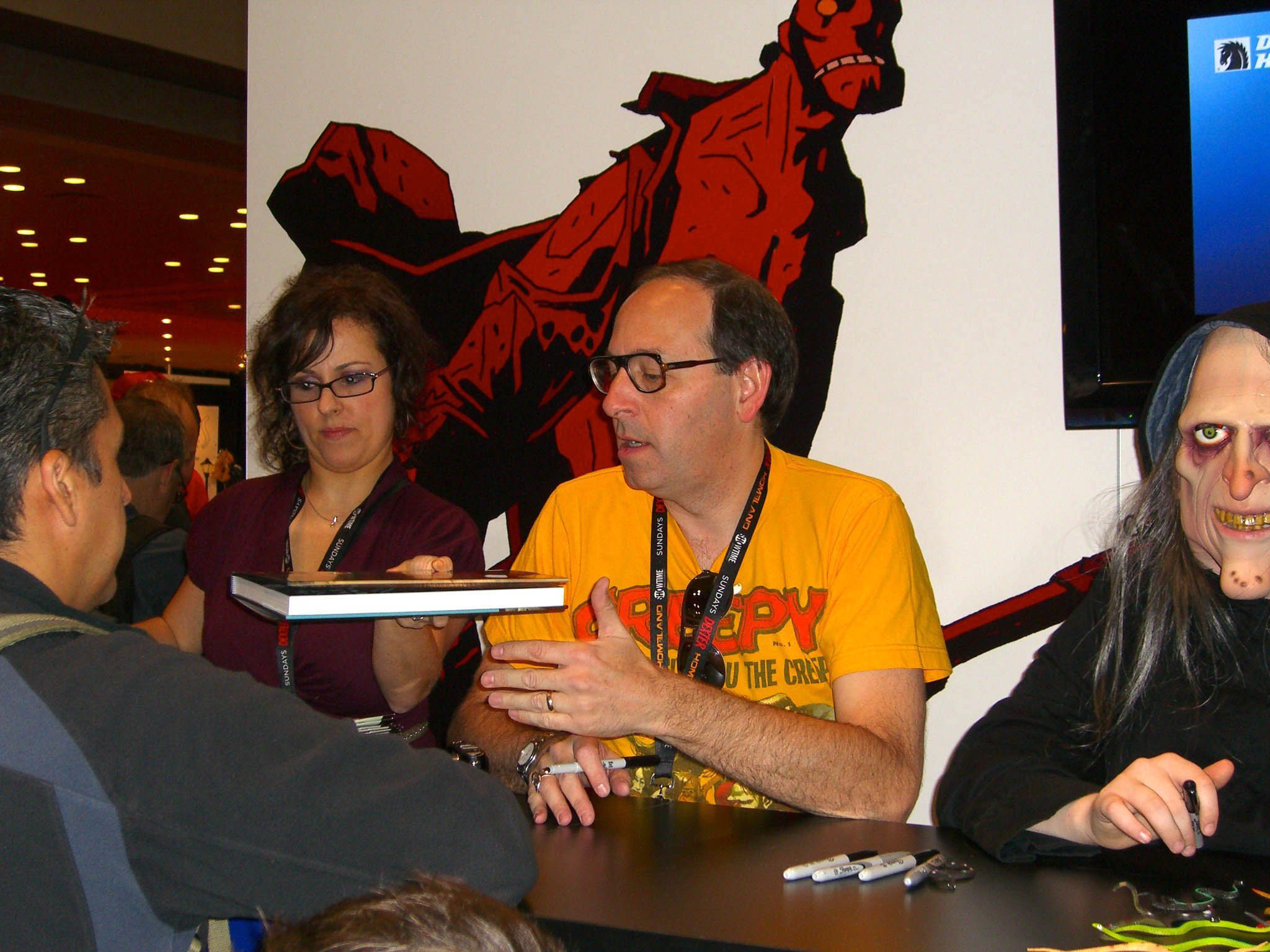|
1984 (magazine)
''1984'' was an American black and white science-fiction comic magazine published in New York City by Warren Publishing from 1978 to 1983. ''1984'' was edited by Bill Dubay. The title of the magazine was changed to ''1994'' starting with issue #11 in February, 1980 based on a request by the estate of George Orwell. The magazine ceased publication with issue #29 in February, 1983 due to the bankruptcy of Warren Publishing. Contributors Artists who contributed stories to ''1984''/''1994'' included Alex Niño, Richard Corben, Jose Gonzalez, Jose Ortiz, Frank Thorne, Esteban Maroto, Rudy Nebres, Jimmy Janes, Abel Laxamana, Wally Wood, Luis Bermejo, Alfredo Alcala, and Vic Catan. Cover artists included Nino, Corben, Patrick Woodroffe, Jim Laurier, Sanjulián, Jordi Penalva, H.R. Giger, Steve Fastner, Rich Larsen, Lloyd Garrison, Terry Oates and John Berkey. Writers included Dubay, Thorne, Jim Stenstrum, Jan Strnad, Rich Margopoulos, Kevin Duane, Nicola Cuti and Gerry Boudreau. Re ... [...More Info...] [...Related Items...] OR: [Wikipedia] [Google] [Baidu] |
Richard Corben
Richard Corben (October 1, 1940December 2, 2020) was an American illustrator and comic book artist best known for his comics featured in '' Heavy Metal'' magazine, especially the ''Den'' series which was featured in the magazine's first film adaptation in 1981. He was the winner of the 2009 Spectrum Grand Master Award2009 Spectrum Grand Master Announced from '''' and the 2018 Grand Prix at Angoulême. In 2012 he was elected to the Will Eisner Award Hall of Fame. Biography Richard Corben wa ...[...More Info...] [...Related Items...] OR: [Wikipedia] [Google] [Baidu] |
Luis Bermejo
Luis Bermejo Rojo (12 August 1931 – 12 December 2015) was a Spanish illustrator and comics artist known for his work published in Spain, Italy, Great Britain, and the United States. He has illustrated a number of novels, and worked for a while with DC Comics. Biography Bermejo initially learned the trade as the assistant of Manuel Gago, before he began his comic book artist career in Britain in the late 1950s when through the agency A.L.I., he worked in the titles '' Girls' Crystal'' and ''Tarzan Weekly''. He worked on ''Thriller Picture'', ''John Steel'', ''War'', ''Battle Picture Libraries'', and ''Pike Mason'' in the early 1960s. In 1962 he started drawing the war-themed comic strip ''Mann of Battle'' for ''The Eagle'', and would draw the strip ''Heros the Spartan'' for that title in 1963. Later in the 1960s he would draw the super hero '' Johnny Future''. For much of the 1960s, Bermejo worked out of a studio in Valencia, Spain for the agency Bardon Arts with other artis ... [...More Info...] [...Related Items...] OR: [Wikipedia] [Google] [Baidu] |
Magazines Established In 1978
A magazine is a periodical literature, periodical publication, generally published on a regular schedule (often weekly or monthly), containing a variety of content (media), content. They are generally financed by advertising, newsagent's shop, purchase price, prepaid subscription business model, subscriptions, or by a combination of the three. Definition In the technical sense a ''Academic journal, journal'' has continuous pagination throughout a volume. Thus ''Business Week'', which starts each issue anew with page one, is a magazine, but the ''Association for Business Communication#Journal of Business Communication, Journal of Business Communication'', which continues the same sequence of pagination throughout the coterminous year, is a journal. Some professional or Trade magazine, trade publications are also Peer review, peer-reviewed, for example the ''American Institute of Certified Public Accountants#External links, Journal of Accountancy''. Non-peer-reviewed academic or ... [...More Info...] [...Related Items...] OR: [Wikipedia] [Google] [Baidu] |
Magazines About Comics
A magazine is a periodical publication, generally published on a regular schedule (often weekly or monthly), containing a variety of content. They are generally financed by advertising, purchase price, prepaid subscriptions, or by a combination of the three. Definition In the technical sense a ''journal'' has continuous pagination throughout a volume. Thus ''Business Week'', which starts each issue anew with page one, is a magazine, but the '' Journal of Business Communication'', which continues the same sequence of pagination throughout the coterminous year, is a journal. Some professional or trade publications are also peer-reviewed, for example the '' Journal of Accountancy''. Non-peer-reviewed academic or professional publications are generally ''professional magazines''. That a publication calls itself a ''journal'' does not make it a journal in the technical sense; ''The Wall Street Journal'' is actually a newspaper. Etymology The word "magazine" derives from Arabic , th ... [...More Info...] [...Related Items...] OR: [Wikipedia] [Google] [Baidu] |
Defunct Science Fiction Magazines Published In The United States
* Obsolescence
{{Disambiguation ...
Defunct (no longer in use or active) may refer to: * ''Defunct'' (video game), 2014 * Zombie process or defunct process, in Unix-like operating systems See also * * :Former entities * End-of-life product An end-of-life product (EOL product) is a product at the end of the product lifecycle which prevents users from receiving updates, indicating that the product is at the end of its useful life (from the vendor's point of view). At this stage, a v ... [...More Info...] [...Related Items...] OR: [Wikipedia] [Google] [Baidu] |
Comics Magazines Published In The United States
a medium used to express ideas with images, often combined with text or other visual information. It typically the form of a sequence of panels of images. Textual devices such as speech balloons, captions, and onomatopoeia can indicate dialogue, narration, sound effects, or other information. There is no consensus amongst theorists and historians on a definition of comics; some emphasize the combination of images and text, some sequentiality or other image relations, and others historical aspects such as mass reproduction or the use of recurring characters. Cartooning and other forms of illustration are the most common image-making means in comics; '' fumetti'' is a form that uses photographic images. Common forms include comic strips, editorial and gag cartoons, and comic books. Since the late 20th century, bound volumes such as graphic novels, comic albums, and ' have become increasingly common, while online webcomics have proliferated in the 21st century. The history ... [...More Info...] [...Related Items...] OR: [Wikipedia] [Google] [Baidu] |
Adult Comics
The catch-all term adult comics typically denotes comic books, comic magazines, comic strips or graphic novels that are marketed either mainly or strictly towards adult (or mature) readers. This can be because they contain material that could be considered thematically inappropriate for children, including vulgarity, morally questionable actions, disturbing imagery, and sexually explicit material. Adult comics can be defined as intended for audience of 16 years or older. In English-speaking countries Early days Roger Sabin traces the history of adult comics back to the political cartoons published in broadsheets since the 19th century.Roger Sabin. Adult Comics: An Introduction (Taylor & Francis, 1993, , Routledge, 2005, ) p. 15 In the 1930s, there were clandestinely produced tijuana bibles – rectangular, eight page pamphlets with black printing on cheap white paper. The artwork ranged from excellent to utterly crude and the stories were explicit sexual escapades, usually ... [...More Info...] [...Related Items...] OR: [Wikipedia] [Google] [Baidu] |
1983 Comics Endings
The year 1983 saw both the official beginning of the Internet and the first mobile cellular telephone call. Events January * January 1 – The migration of the ARPANET to Internet protocol suite, TCP/IP is officially completed (this is considered to be the beginning of the true Internet). * January 24 – Twenty-five members of the Red Brigades are sentenced to life imprisonment for the 1978 murder of Italian politician Aldo Moro. * January 25 ** High-ranking Nazism, Nazi war crime, war criminal Klaus Barbie is arrested in Bolivia. ** IRAS is launched from Vandenberg AFB, to conduct the world's first all-sky infrared survey from space. February * February 2 – Giovanni Vigliotto goes on trial on charges of polygamy involving 105 women. * February 3 – Prime Minister of Australia Malcolm Fraser is granted a double dissolution of both houses of parliament, for 1983 Australian federal election, elections on March 5, 1983. As Fraser is being granted the dissolution, Bill Hayden ... [...More Info...] [...Related Items...] OR: [Wikipedia] [Google] [Baidu] |
1978 Comics Debuts
Events January * January 1 – Air India Flight 855, a Boeing 747 passenger jet, crashes off the coast of Bombay, killing 213. * January 5 – Bülent Ecevit, of CHP, forms the new government of Turkey (42nd government). * January 6 – The Holy Crown of Hungary (also known as Stephen of Hungary Crown) is returned to Hungary from the United States, where it was held since World War II. * January 10 – Pedro Joaquín Chamorro Cardenal, a critic of the Nicaraguan government, is assassinated; riots erupt against Somoza's government. * January 18 – The European Court of Human Rights finds the British government guilty of mistreating prisoners in Northern Ireland, but not guilty of torture. * January 22 – Ethiopia declares the ambassador of West Germany '' persona non grata''. * January 24 ** Soviet satellite Kosmos 954 burns up in Earth's atmosphere, scattering debris over Canada's Northwest Territories. ** Rose Dugdale and Eddie Gallagher become the first convic ... [...More Info...] [...Related Items...] OR: [Wikipedia] [Google] [Baidu] |
Harlan Ellison
Harlan Jay Ellison (May 27, 1934 – June 28, 2018) was an American writer, known for his prolific and influential work in New Wave speculative fiction and for his outspoken, combative personality. Robert Bloch, the author of '' Psycho'', described Ellison as "the only living organism I know whose natural habitat is hot water." His published works include more than 1,700 short stories, novellas, screenplays, comic book scripts, teleplays, essays, and a wide range of criticism covering literature, film, television, and print media. Some of his best-known works include the 1967 '' Star Trek'' episode "The City on the Edge of Forever" (he subsequently wrote a book about the experience that includes his original screenplay), his ''A Boy and His Dog'' cycle, and his short stories " I Have No Mouth, and I Must Scream" and " 'Repent, Harlequin!' Said the Ticktockman". He was also editor and anthologist for '' Dangerous Visions'' (1967) and '' Again, Dangerous Visions'' (1972). ... [...More Info...] [...Related Items...] OR: [Wikipedia] [Google] [Baidu] |
Vampirella
Vampirella () is a fictional vampire superheroine created by Forrest J Ackerman and comic book artist Trina Robbins in Warren Publishing's black-and-white horror comics magazine ''Vampirella'' #1 (Sept. 1969), a sister publication of ''Creepy'' and ''Eerie''. Writer-editor Archie Goodwin later developed the character from horror-story hostesses, in which capacity she remained through issue #8 (Nov. 1970), to a horror-drama leading character. The magazine was published continuously until 1983, when Warren Publishing ceased operations and its assets were bought by Harris Publications. ''Vampirella'' comics, both new and reprints, have continued through various publishers into the 21st century. Publication history Warren Publishing Vampirella initially appeared in Warren Publishing's black-and-white horror-comics magazine ''Vampirella'' #1 (Sept. 1969), running to issue #112 (March 1983), [...More Info...] [...Related Items...] OR: [Wikipedia] [Google] [Baidu] |
Eerie
''Eerie'' was an American magazine of horror comics introduced in 1966 by Warren Publishing. Like '' Mad'', it was a black-and-white magazine intended for newsstand distribution and did not submit its stories to the comic book industry's voluntary Comics Code Authority. Each issue's stories were introduced by the host character, Cousin Eerie. Its sister publications were ''Creepy'' and ''Vampirella''. Publication history The first issue cost 35¢, was published in September 1966 and only had a 200-issue run of an "ashcan" edition. With a logo by Ben Oda, it was created overnight by editor Archie Goodwin and letterer Gaspar Saladino to establish publisher Jim Warren's ownership of the title when it was discovered that a rival publisher (later known as Eerie Publications) would be using the name. Warren explained, "We launched ''Eerie'' because we thought ''Creepy'' ought to have an adversary. The Laurel and Hardy syndrome always appealed to me. ''Creepy'' and ''Eerie'' are like ... [...More Info...] [...Related Items...] OR: [Wikipedia] [Google] [Baidu] |






